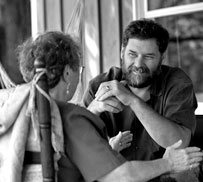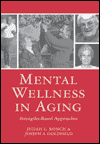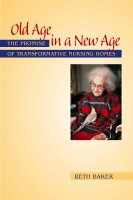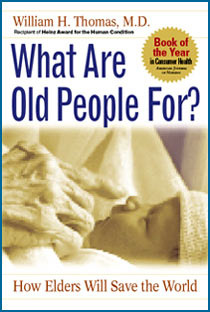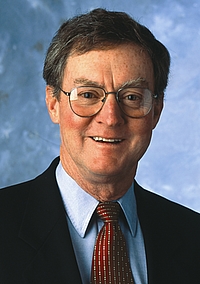![]()
Search
Recent Posts
- ChangingAging.org Redesign -- Please Bookmark!
- Disaster in Buffalo
- Power Up Friday
- Blanchard WinsDays
- Kevin Frick writes...
- Monkhouse Monday
- Getting Closer!
- Blanchard WinsDays
- Power Up Friday
- My Pick for Health and Human Services
- Understanding Health Care Reform
- Facts Are Stubborn Things: Social Security Edition
- Monkhouse Monday
- Localism is Coming
- Krugman Can't Wait...
Recent Comments
Category Archives
- AGING 100
- Aging
- Culture
- Dementia
- Eden Alternative
- Erickson School
- Green House
- Health Policy
- Longevity
- Media
- Rockets
Monthly Archives
- February 2009
- January 2009
- December 2008
- November 2008
- October 2008
- September 2008
- August 2008
- July 2008
- June 2008
- May 2008
- April 2008
- March 2008
- February 2008
- January 2008
- December 2007
- November 2007
- October 2007
- September 2007
- August 2007
 Subscribe to this blog's feed
Subscribe to this blog's feed
Announcements

Blog Data
« 12 People Who Are Changing Aging No. 3 | Main | Age Games »
February 21, 2008 |Permalink |Comments (1)
12 People who Are Changing Aging No. 4
[Editors note -- this is a continuation of 12-part feature by The Wall Street Journal profiling "pioneers who are shaping the way Americans will live, work and play in later life."]
Yesterday, Brenda from MAgS made this excellent comment in response Eric Dishman's laudable efforts to help people live independently:
Staying home is great, and seems to be what everyone wants. But where is the healthcare? In a CCRC, healthcare is available whenever it is needed. At home, unless links have been made in advance, getting healthcare can become a real obstacle to staying put, and people should not be fooled that technology can fully take the place of personal care.
Here's what's at the heart of this debate: Our society judges the worthiness of individuals based almost entirely on their ability to function and act like adults. There's good reason why most folks want to live independently -- failing to live independently is tantamount to failing to be an "adult." The consequences ARE SEVERE. Failing to be an adult can result in loss of home, loss of possessions, having your pets euthanized and ultimately, the loss of freedom, privacy and dignity.
I am keenly interested in the idea of aging in community as a successor to America's increasingly outmoded devotion to Aging in Place. Aging in Place lionizes the private family home as the ONLY legitimate place where older people can and should live. I suppose one could argue that back when we all lived in close proximity to a large network of close blood relatives, aging in place was the natural order of things. But guess what?
The world has changed and our understanding of aging needs to change as well. What people in late life need, in addition to privacy, safety and dignity, is to be part of a real flesh and blood community. The need to be able to participate in a range of meaningful relationships, people (of all ages) need to care and to know that others care about them.
Living alone in a typical detached family dwelling (minus the family) cannot serve this need and that is why I think that Aging in Place is failing us as an organizing concept for the last half of life.
These ideas bring us to the next WSJ Changing Aging profile and a familiar face to the Erickson School family -- John Erickson, founder of Erickson Retirement Communities, who helped launch the Erickson School and continues to be a committed partner in our work. John's genius has, I think, revolved around making the decision to "leave home" into a move toward something -- a vibrant community-- rather than a move away from something-- leaky gutters.
Number Four -- Helping People Leave Home.
In contrast to Mr. Dishman, John Erickson sees a future where millions of Americans leave their homes in later life. And he's preparing your accommodations.
Mr. Erickson, 63, is chairman and chief executive of closely held Erickson Retirement Communities, one of the country's largest developers of continuing-care retirement communities. In a CCRC, residents are guaranteed access to different levels of long-term care as they age.Starting in Maryland in 1983 with a single facility (a renovated seminary), Mr. Erickson began developing retirement "campuses," where residents, among other activities, can produce their own TV shows. Today, the company has 20 CCRCs with 21,000 residents in 11 states. Mr. Erickson hopes to nearly double that number in five years.
Why should we leave our homes in later life? "Accidents, falls, depression, isolation," Mr. Erickson answers. "That's not what was meant for the last half of retirement."
Beyond housing, Mr. Erickson also may have a hand in shaping what older adults watch on television. In the past two years, he has spent an estimated $100 million building Retirement Living TV, a cable network focused on later life. He also donated $5 million in 2004 to start a professional program at the University of Maryland, Baltimore County, that combines management, policy and aging issues.
-- By Kelly Greene, The Wall Street Journal
Tomorrow -- A Life of Purpose.
Comments ( 1)
I continue caretaking my friend in the nursing home, and I regret that it's too late for an alternative. Even if there had been a choice, Medical will not pay for alternatives. That's the bottom line. Money. Because we put him where he would be safe, he will die years before he should. I watch him fade every day.


